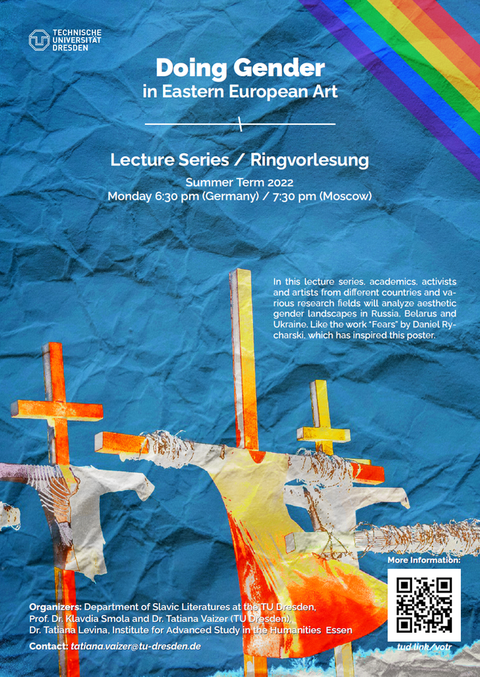28.03.2022
Ringvorlesung: Doing Gender in Eastern European Art
Im SoSe 2022 veranstaltet GCG-Mitglied Prof. Dr. Klavdia Smola die Online-Ringvorlesung "Doing Gender in Eastern European Art" in Kooperation mit Wissenschaftler:innen, Künstler:innen und Aktivist:innen immer montags 6:00 PM (MET) / 7:00 PM (Moscow Time). Gemeinsam schauen sie auf die Besonderheiten der ästhetischen Geschlechterlandschaften in der Ukraine, Polen, Russland und Weißrussland.
Hier geht es zu allen Teilnahmeinformationen und zum Programm.
About the series
In Eastern Europe of the 2010s and early 2020s, the notion of gender became the focus of social debates and political actions. Art performances, interactive exhibitions, pedagogical projects, poetry interventions and other multimedia projects has been and are not only an essential part of the intellectual boom of feminist (sub)cultures and queer communities today. They are also a major crossroad and a mirror of other current discussions: on social inequality, political repressions, ecology or the suppression of collective memory. At the same time, the topic of gender provides an important impetus for the formation of communities with shared identities that run counter to the ideological mainstream and the politics of populism and propaganda.
In this lecture series, academics, activists and artists from different countries and various research fields will analyze peculiarities of aesthetic gender landscapes in Russia, Belarus, Ukraine and Poland. The focus will be on the recent and most recent periods (2010-2020s), when in a number of regions of Eastern Europe conservative and sometimes even patriarchal-sexist laws has been adopted, which discriminated sexual minorities and legalized domestic violence.
We will be interested in the following questions: What is the most topical agenda of artistic gender practices today? What is post-feminism, ecofeminism or digital queer? How does gender relate to other social and political issues in Eastern Europe? What does the culture of art participation look like today from a gender perspective (for example, within the framework of the so-called aesthetics of motherhood and care)? How are these practices mediatized and what public spaces do they engender?

